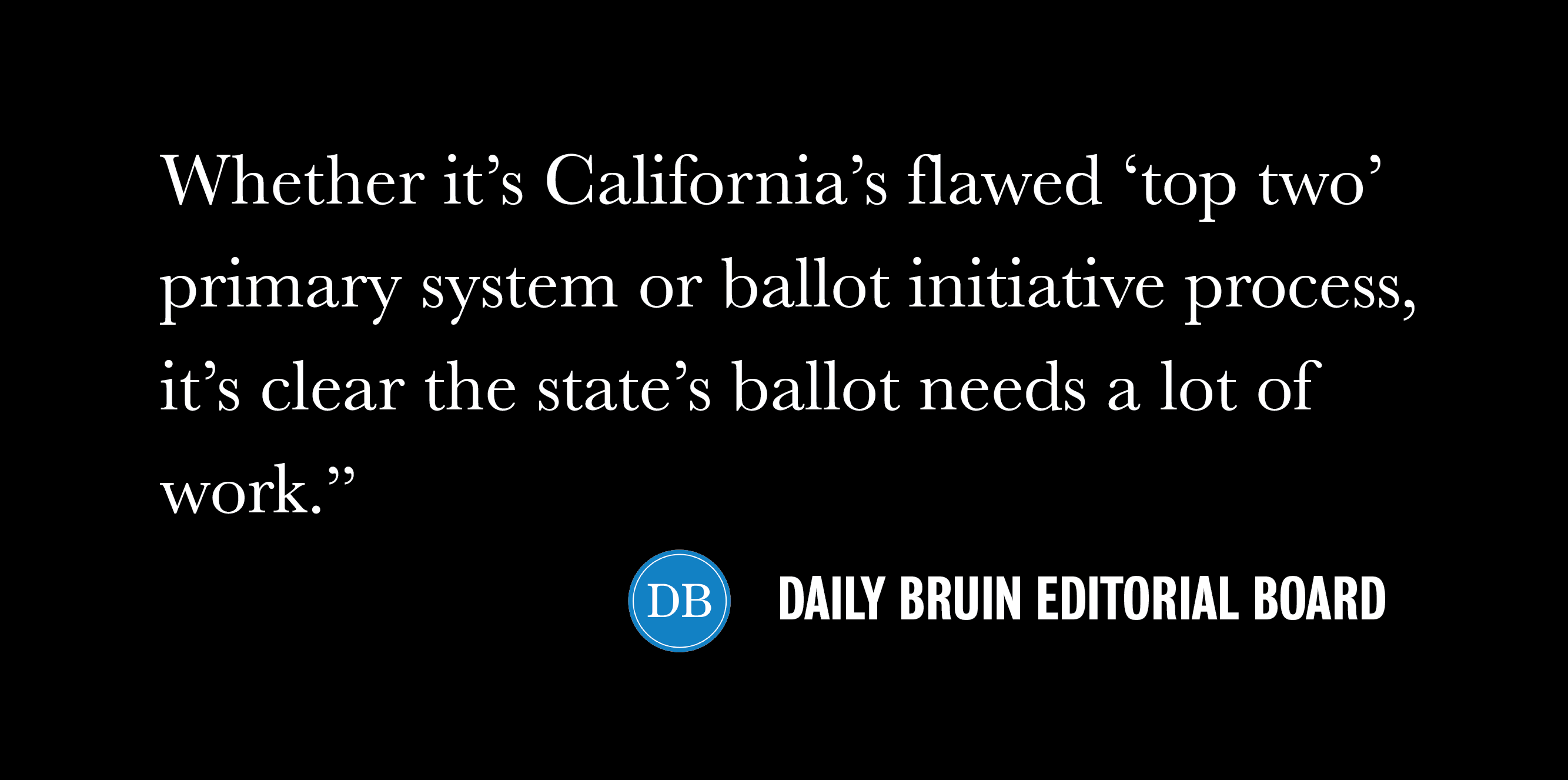Editorial: California’s flawed ballot system complicates, hinders voting process

By Editorial Board
July 8, 2018 10:52 p.m.
California has taken democracy to a new level: its ballot system not only turns residents into legislators, but it also forces them to do political gymnastics to ensure qualified candidates make it to general elections.
Last month’s primary elections were proof enough: Californians were effectively asked to pass five laws and split their votes between 27 gubernatorial candidates – 12 Democrats, five Republicans and 10 third-party or independent candidates.
The result: a warped November midterm election ballot. Californians have to choose between a Democrat and Republican for their next governor, the latter of whom is an insular candidate endorsed by President Donald Trump. And after already voting on five ballot measures in June, they must page through a whopping 12 other propositions, including a measure to split California into three states.
The Golden State is in serious need of a ballot revision. Voters are fatigued by systemic problems in the state’s ballot, such as the overflow of ballot propositions and the “top two” primary system that inadvertently knocks out qualified candidates because of vote splitting.
The ballot initiative process, for example, allows for Californians to propose laws and constitutional amendments without needing the support of the governor or Legislature. All they need is a certain number of signatures on a petition.
While this may sound like a great way to give people a democratic voice, the number of measures that get put on the ballot makes little sense considering how low voter turnout is and how technical the propositions can be. Turnout in the June primary, for example, was a dismal 37.5 percent.
In the November 2016 election, for instance, Californians had to vote on both a measure to ban plastic bags and an industry-backed measure to maintain the use of plastic bags – an obvious ploy to confuse voters.
The “top two” primary system itself springs from the state’s obsession with ballot measures. The system, which determines the top two candidates who will advance to general elections, regardless of party affiliation, came from a 2010 ballot initiative marketed as a way to reduce partisanship in voting.
General elections, however, are often a partisan match between a Democratic and Republican candidate. Moreover, there have been instances where major parties get locked out altogether due to vote splitting.
As such, Californians end up casting votes for the candidate their party endorses, so as to prevent a lock-out, and not necessarily for the candidate they want to win. Voters are motivated to choose the “lesser of two evils,” or rather, whoever they think has the best chance of beating the candidate they don’t want to see in office.
But there are ways to fix these kinds of ballot shortcomings. California could, among other things, require gubernatorial or legislative approval for initiatives to be put on the ballot, and implement a ranked choice voting system to allow people to vote for the candidates they want to win.
Gubernatorial or legislative approval – if done correctly – could serve as stopgaps for confusing sets of propositions making their way to the ballot. And with RCV, voters can rank candidates by their preferences, eliminating vote splitting and allowing the state to immediately determine the most representative candidate without needing a primary election.
Of course, California’s current ballot is intended to maximize voting power. After all, what better way to give voter’s agency than to allow them to pass measures twice every two years and choose the top two candidates from all political parties?
But the current system does more to puzzle and disengage voters than to simplify the ballot. Whether it’s California’s flawed “top two” primary system or ballot initiative process, it’s clear the state’s ballot needs a lot of work.
Low voter turnout can’t just be blamed on decreasing interest in politics, not when our electoral system makes voting a more complicated process than it needs to be.


